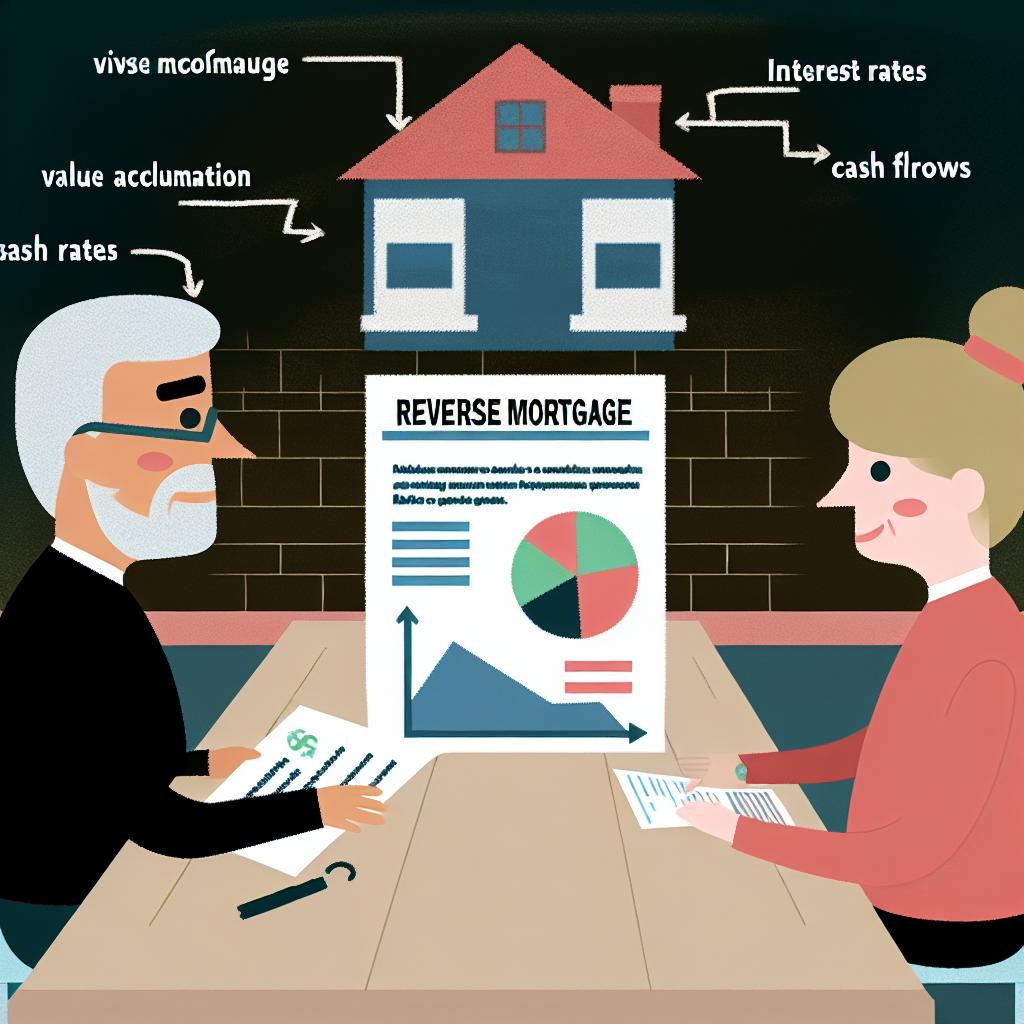
How to use a reverse mortgage effectively.
Understanding Reverse Mortgages
A reverse mortgage is a financial product principally tailored for homeowners who are 62 years of age or older. It provides an opportunity for these individuals to transform a part of their home equity into cash. Before opting for this financial tool, it is imperative to fully understand its structure and the implications tied to its use.
How Reverse Mortgages Work
The mechanism of a reverse mortgage permits homeowners to draw payments against their home equity while retaining ownership of the property. The versatility of payment options with a reverse mortgage is one of its appealing features. Homeowners can choose to receive their funds as a lump sum, establish a line of credit, or opt for monthly installment payments. The loan’s repayment is deferred until the homeowner either sells the house, permanently relocates, or passes away. At that juncture, the proceeds from the home’s sale are generally utilized to settle the outstanding loan balance.
Types of Reverse Mortgages
Understanding the various types of reverse mortgages available can help in choosing the most suitable option for your situation:
Home Equity Conversion Mortgage (HECM): This is the most prevalent type of reverse mortgage and is insured by the Federal Housing Administration (FHA). The insurance offers an added layer of protection to borrowers, making HECM a popular choice among seniors seeking financial flexibility.
Proprietary Reverse Mortgages: Offered by private lenders, these loans typically suit homeowners with higher-value properties. The lack of federal insurance means these loans might offer greater proceeds, although they may come with specific terms and conditions.
Single-Purpose Reverse Mortgages: Generally provided by state or local government agencies, these mortgages are designed for specific purposes such as home repairs or covering property taxes. They are often more economical compared to other types of reverse mortgages but are limited in their scope of use.
Key Considerations
Before deciding to proceed with a reverse mortgage, consider the following essential aspects:
Eligibility: The minimum age requirement is 62 years. You must own the home outright or possess a substantial amount of equity in the property to qualify.
Costs: There are significant upfront costs associated with reverse mortgages, including origination fees, mortgage insurance premiums, and closing costs. It’s prudent to weigh these expenses against the benefits you anticipate receiving.
Impact on Heirs: It’s crucial to understand how a reverse mortgage might impact your estate and what your heirs will receive. Once the loan becomes due, repayment will be necessary, which could influence the inheritance passed on to your beneficiaries.
How to Use a Reverse Mortgage Effectively
To make the most of a reverse mortgage, aligning it with your broader financial strategy and goals is essential.
1. Supplement Retirement Income
A reverse mortgage can serve as a supplement to your retirement income, providing additional funds for daily living expenses or unexpected financial needs. This is especially useful if your retirement savings have not accrued as predicted.
2. Cover Healthcare Costs
Rising healthcare expenses pose a continual challenge. Utilizing a reverse mortgage to fund medical expenses, long-term care, or home modifications to accommodate health needs can be a pragmatic approach.
3. Home Improvements
Funding vital home improvements or repairs through a reverse mortgage can enhance your home’s safety, energy efficiency, and market value, all without straining your existing savings.
Cautions to Keep in Mind
While reverse mortgages offer attractive benefits, they might not be ideal for everyone. Weigh these considerations carefully:
Impact on Benefits: The influx of funds from a reverse mortgage might influence your eligibility for government assistance programs that are need-based, such as Medicaid. It’s important to assess this potential impact in advance.
Longevity in the Home: This financial product is most suitable for those who aim to reside in their home for a considerable period. If relocation or sale is foreseeable in the near term, explore whether this option meets your needs effectively.
Inheritance Considerations: If passing your home to future generations is a critical part of your plan, discuss the potential challenges with family members and explore alternative financial solutions.
Additional Resources
Seeking comprehensive information on reverse mortgages can aid in making an informed decision. Reputable financial advisors or resources from government agencies focusing on financial products for seniors can provide valuable insights. If you are interested in learning more about how a reverse mortgage can benefit you, or if you wish to locate a local advisor, consider visiting the Consumer Financial Protection Bureau’s website.
Understanding the intricate details surrounding reverse mortgages ensures that you can make a decision that aligns with your financial well-being and future aspirations.
